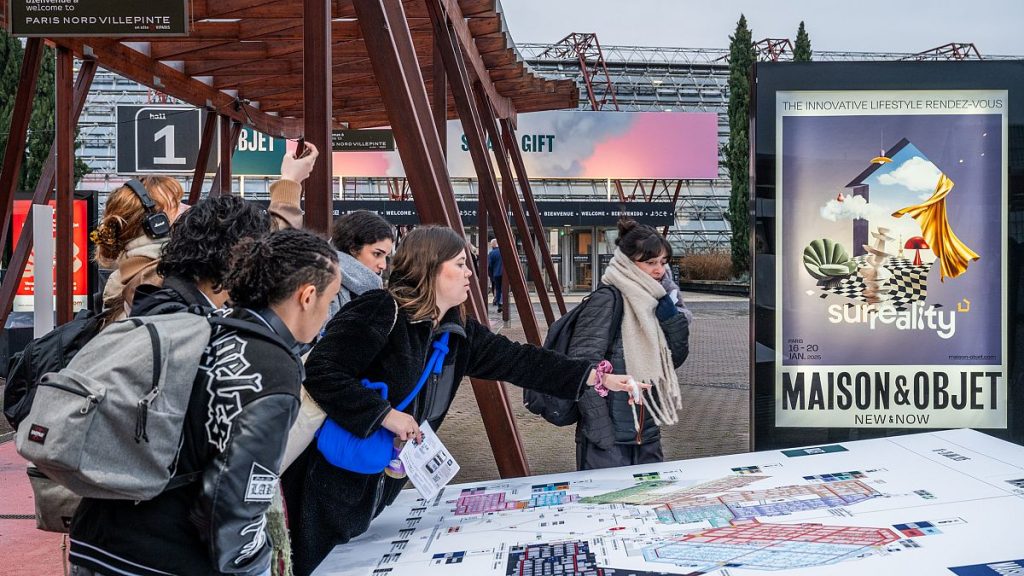Maison&Objet, a biannual Parisian trade fair sprawling across a vast exhibition space, serves as a crucial nexus for the international lifestyle industry. Hosting thousands of brands, designers, artisans, and industry experts, the event pulsates with the unveiling of new products, the exploration of emerging trends, and the forecasting of future desires that will shape our living spaces. This year’s theme, surrealism, captures a growing consumer appetite for the unexpected and the dreamlike, reflecting a need to re-enchant the everyday and inject a sense of playful escapism into our homes. This desire for novelty extends beyond mere aesthetics, prompting designers and manufacturers to rethink their approach to consumption in a world increasingly conscious of its environmental footprint.
The current edition of Maison&Objet explores surrealism not merely as an aesthetic but as a lens through which to examine our relationship with objects and consumption. Elizabeth Leriche’s labyrinthine installation, featuring headless animals, horned vases, and an inverted ceiling, serves as a provocative commentary on the strangeness of our consumer desires. It encourages visitors to question the meaning and purpose of the objects that surround them, inviting a more mindful and less passive approach to acquiring and interacting with material possessions. This exploration of surrealism coincides with the movement’s centenary, reminding us of its enduring power to disrupt conventional thinking and challenge the status quo.
Beyond the whimsical and the unexpected, the exhibition also reflects a growing trend towards seeking refuge and tranquility within the home. In a world beset by constant change and uncertainty, our interiors have become sanctuaries, spaces where we seek to reconnect with nature and recharge our emotional batteries. This desire aligns seamlessly with the surrealist fascination with flora and fauna, allowing exhibitors to showcase products that blend artistic expression with eco-responsibility. This represents a conscious effort to address consumer concerns about sustainability and ethical production, merging the pursuit of beauty with a growing awareness of our environmental impact.
The challenge for the industry lies in reconciling the demand for novelty with the imperative for sustainability. Consumers are increasingly aware of the environmental and social costs of mass consumption and are seeking products that align with their values. This shift presents a complex equation for manufacturers: how to create desirable, accessible products that are also genuinely eco-responsible and preferably locally sourced. While there’s been progress in relocating production for larger items like sofas, the challenge remains for smaller decorative objects, where the goal is to make ethically produced, high-quality pieces affordable without compromising on design or creativity. The exhibition demonstrates a clear shift towards European manufacturing, signaling a move away from globalized production and a renewed focus on regional craftsmanship and reduced transportation footprints.
The rise of the second-hand market presents another significant challenge for the lifestyle industry. Younger generations, driven by both economic considerations and a growing appreciation for vintage and pre-owned items, are increasingly turning to this alternative. While this trend may seem counterintuitive to the business model of showcasing new products, Maison&Objet acknowledges the need to adapt to evolving consumer behaviors. This includes offering innovative products at competitive price points while also catering to the high-end market, reflecting the polarized nature of contemporary purchasing power. The key, according to industry experts, is to create objects that resonate with consumers on a deeper level, offering a sense of uniqueness and lasting value beyond mere fleeting trends.
Maison&Objet’s international reach is a critical aspect of its success. Attracting tens of thousands of visitors from around the globe, the fair provides an invaluable platform for brands to expand their reach and connect with new markets. For international buyers, it offers a concentrated source of inspiration and a chance to discover emerging trends and innovative products. This cross-cultural exchange of ideas and aesthetics enriches the creative landscape, fostering collaboration and promoting a global dialogue within the design community. The fair’s commitment to showcasing rising talents from different countries further underscores its dedication to fostering international exchange and highlighting the diversity of design perspectives worldwide. This focus on international talent not only provides emerging designers with valuable exposure but also enriches the overall offering of the fair, introducing fresh perspectives and innovative approaches to design.














